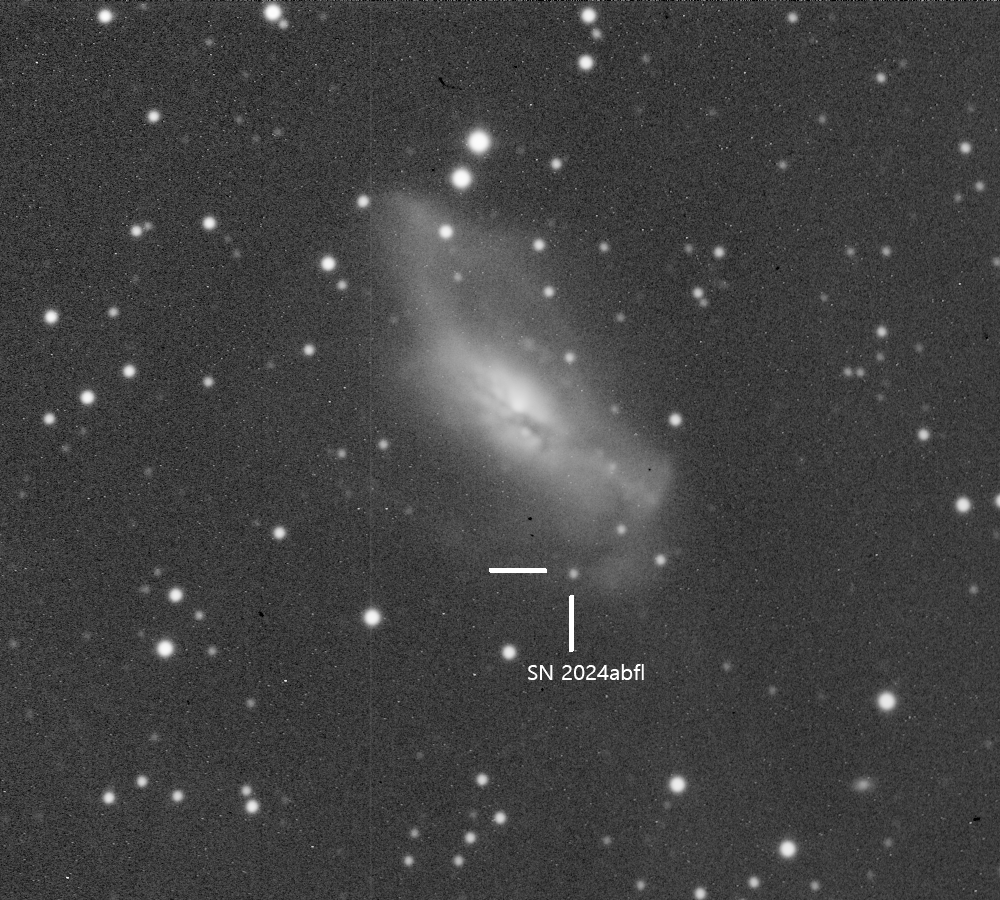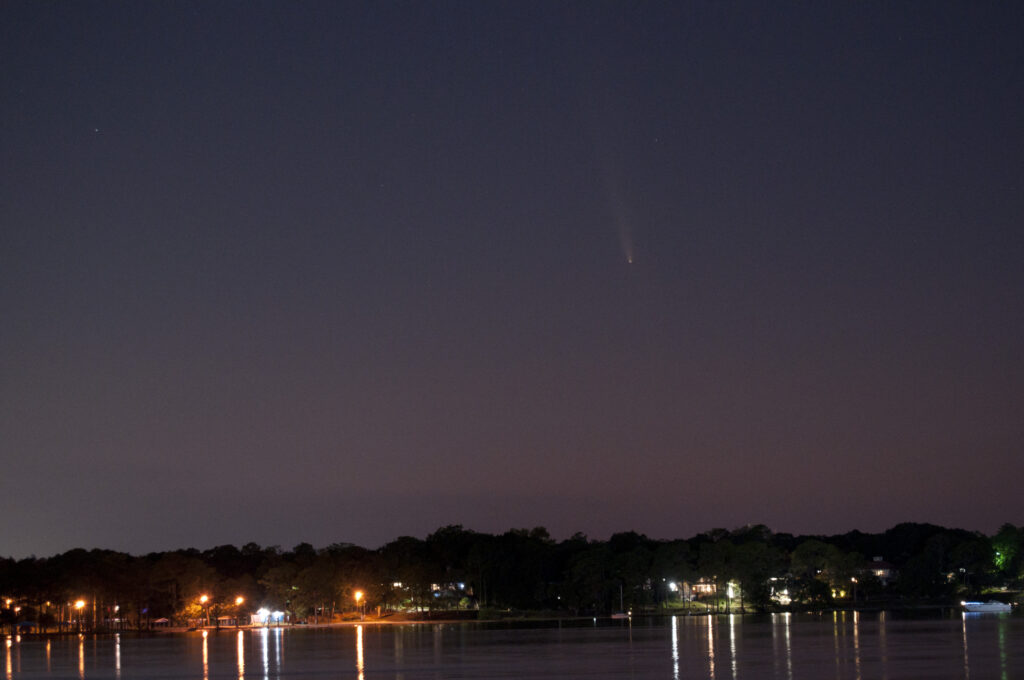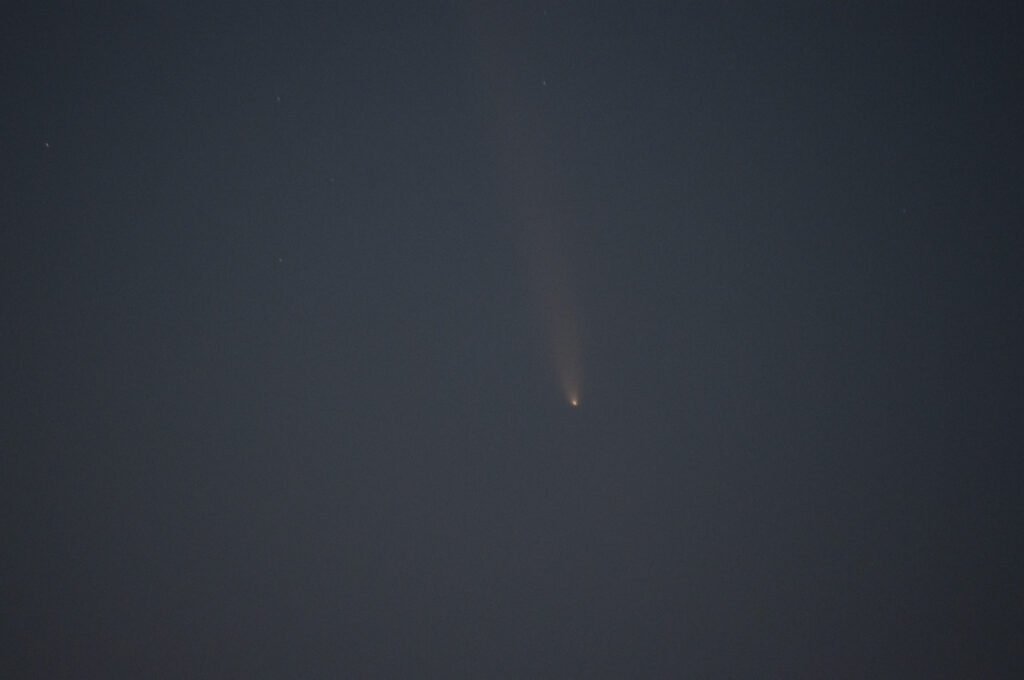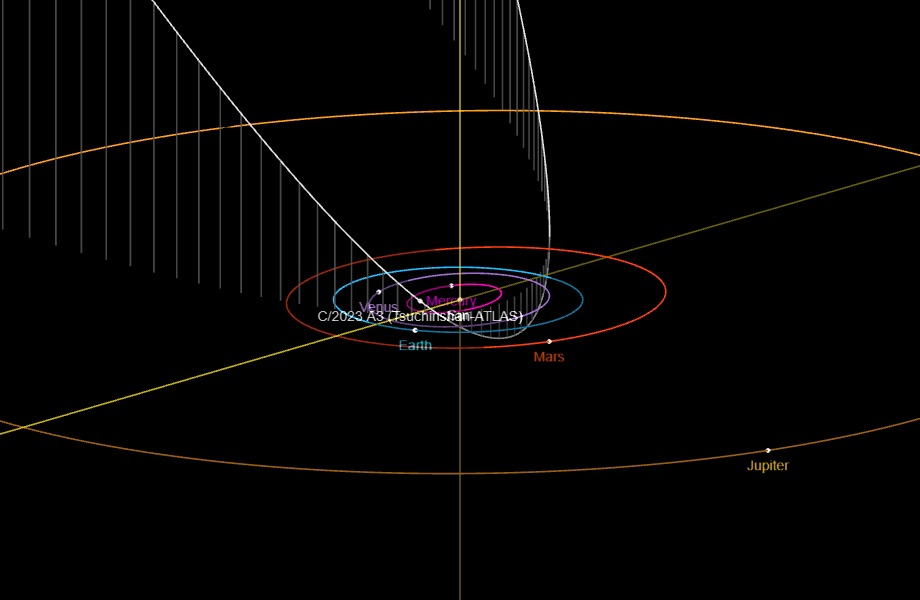Supernova SN 2024abfl was discovered by Koichi Itagaki on the 15th of November 2024. It is associated with galaxy NGC 2164. The initial magnitude was measured to be 17.5 and has been spectroscopically identified as a type 2 supernova. All the other stars in the image are in the Milky Way. NGC 2146 is located in the northern constellation of Camelopardalis (giraffe).
While waiting for my deep space camera to be repaired, I’ve been busying myself with two alternate efforts. One, planetary imaging since Saturn, Jupiter and Mars are in the morning sky. Second, developing the process of using a smaller telescope and a new, to me, deep sky camera. The second effort is the subject of this post.
I’ve always wanted the ability to image larger portions of the sky without resorting to mosaicking smaller images into one larger image. My normal deep sky setup’s FOV is only 24′ (arc minutes) by 16′. This is great for asteroid astrometry but a real pain to get something as large as the Pleiades (M 45) for example.
I have a wide FOV short tube 80mm f/6.0 apochromatic refractor. Paired with a 20-year-old STL-11000M CCD camera, I can now get a 4.3° x 2.8° FOV. So, I am, since I have the time, developing the procedures I need to use this imaging system effectively. Here is one of my first attempts.
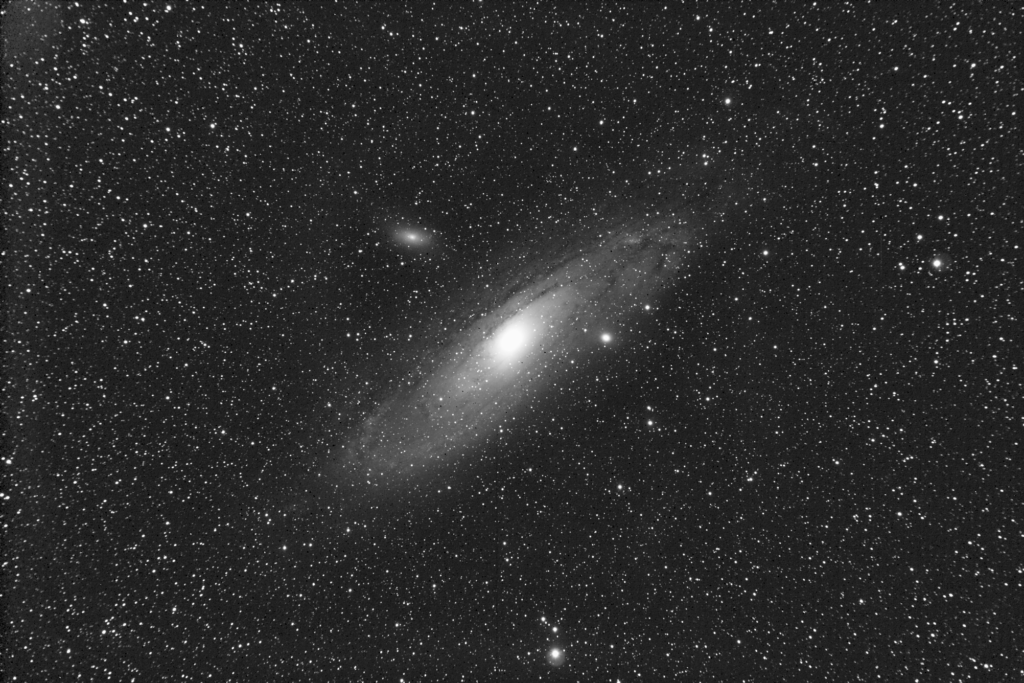
M 31 (The Great Andromeda Galaxy) [L: 30x60s] (Mouse over for labels)
This is of course, M 31 – a large spiral galaxy located in the Andromeda constellation. Located 2.5 million light years away, this is the furthest object that can be seen naked eye. You need a clear dark night, but even I have seen the bright core of this galaxy.
Mousing over the image will show labels for several objects associated with M 31. M 32 and M 110 are small satellite galaxies. These are gravitationally bound to M 31 in the same way the large and small Magellanic Clouds are gravitationally bound to the Milky Way. NGC 206 is a large star cloud and is one of the largest and brightest star forming regions in the nearby group of galaxies which includes the Milky Way.
These images of Comet C/2023 A3 (Tsuchinsan-ATLAS) were taken on the evening of the 13th of October from Niceville’s Lions Park on the shores of Boggy Bayou. This location has, as can be seen, a very low western horizon. Depending how experienced your eyes are will determine whether or not you can see the comet naked eye or not. Several observers at the park reported observing a prominent coma and tail. Others were not able to view the comet without binoculars or similar equipment. I fall into the second category.
I swapped the lens to one capable of 200mm for this slightly closer view.
Calculations using inbound observations show a retro-grade orbit. As can be seen in the orbit diagram below, most of the orbit is above the ecliptic with it only dipping below just outside the orbit of Mars and rising back above inside the orbit of Venus. The comet’s orbit relative to Earth’s has now shifted our view from the morning to the evening. It passed closest to the Earth yesterday (12 Oct 2024) and is now headed back towards the outer solar system.
Calculations show the current orbit is loosely bound to the Sun and the gravitational impact of its proximity to the inner planets will either shorten its orbit or the gravitational impact may send it out of the solar system entirely.
Astrometric observations taken now and for as long as the comet is bright enough will be factored into the outbound orbit calculations to find out what the comet’s ultimate destination will be. Whether or not I get to contribute any of those observations all depends on the manufacturer of my deep space camera finishing repairs in time. The camera is in the shop because the cooling fans stopped running. This leads to the camera overheating and shutting down.
I did get images of this comet as it came towards the inner solar system: C/2023 A3 (Tsuchinshan–ATLAS) (02 Jun 2024)
It has taken a while but as far as basic functionality the observatory is back up. I was able to manually use each piece of equipment late last week and it took this week to get everyone to play well together using the automation software that I use.
I still have to bring up the occultation system and check out the lunar, planetary and solar (LPS) imaging system. The software for LPS shares a third computer that is primarily dedicated to supporting the SkySentinel meteor system. The SkySentinel software is quite old and does not like sharing USB with other cameras. I have to turn off the meteor camera while imaging the Moon or planets. Once everything settles down, I plan on migrating the LPS capability to the primary computer.
So, first thing this evening (Aug 23) will be to check in on T CrB.
Replacing the cable modem and then the network switch brought the observatory back online. However, a couple of days later, the primary computer finally failed for good.
To be fair, I have been nursing it along for several years now and maybe the recent stress made it finally fail, maybe not. This computer was the one that took the most severe hit on the July 6, 2012 lightning strike. It lost one of the ethernet ports and both of the RS-232 ports. I switched to the other e-net port and installed a RS-232 serial card and pressed on. A couple of years ago it could no longer find the #1 disk, so I had to reconfigure it to use the other disk and pressed on.
Recently though, observing runs have been interrupted by IO errors. So, I ordered replacement computers. The observatory uses two, the first runs the scope and equipment for imaging. The second, runs all the support functions, weather, sky monitor, etc. Both have been running for 12 years and I bought them refurbished. It’s time to let them rest.
The first replacement has arrived and I am in the process of bringing it online. This may take a while.
